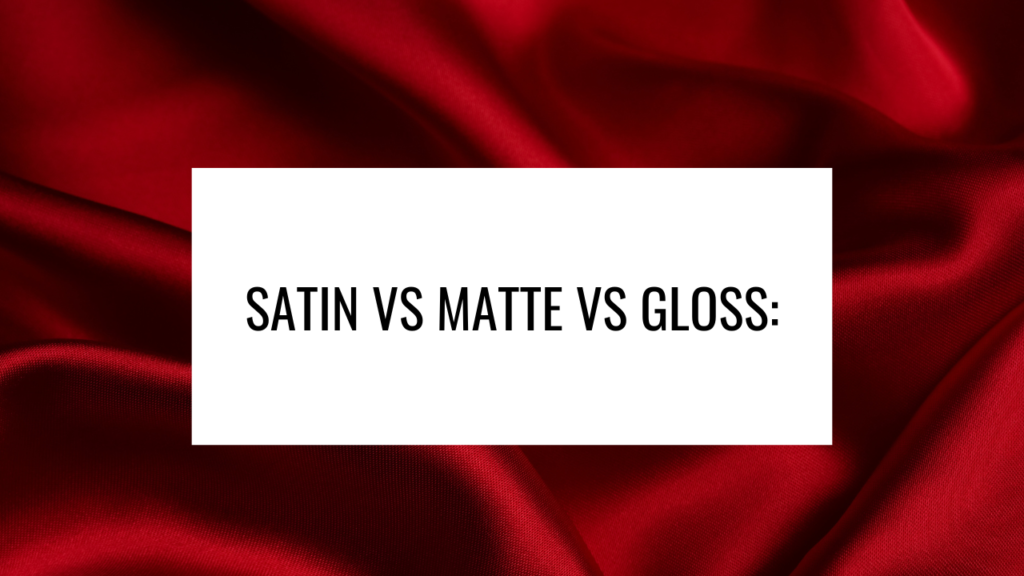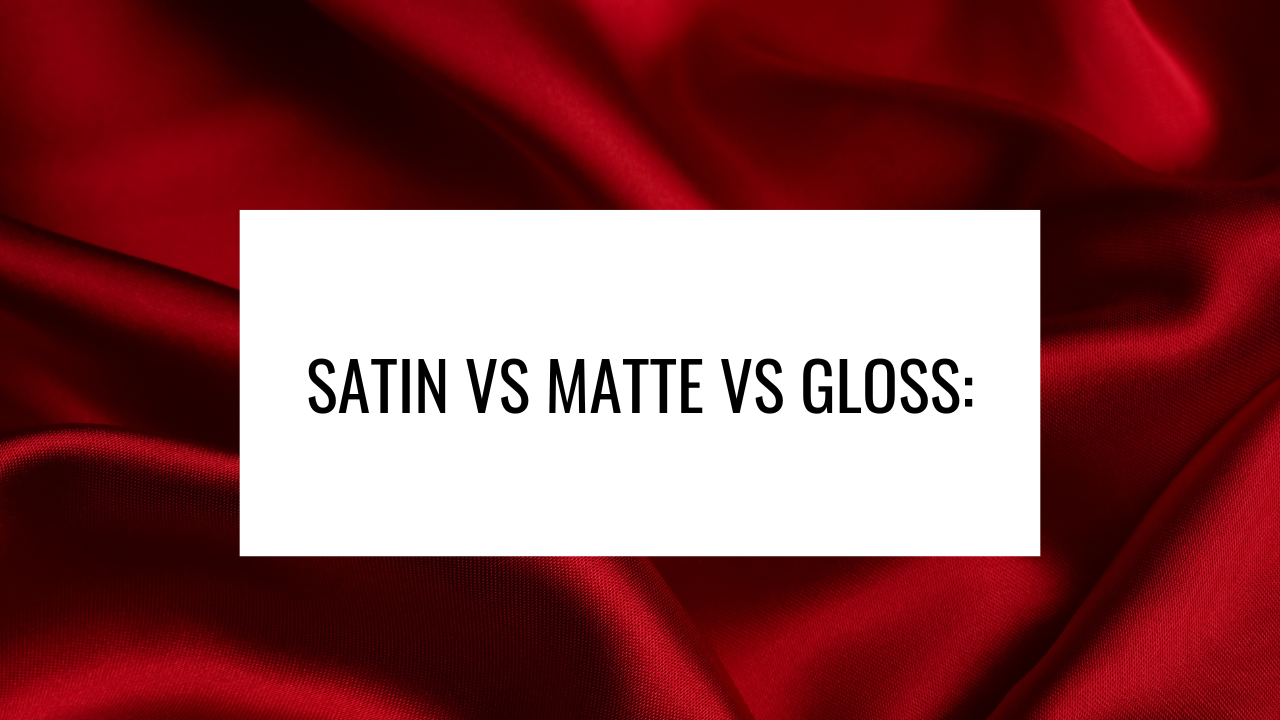Satin vs Matte vs Gloss? There’s more to paint than picking a colour, you’ll also want to select the proper finish.
Whether you want your paint to have a sheen, a semi-sheen, or dry completely matte, there’s a finish to complement your vision. To help you decide which type of finish is best for you, we’ll compare some top contenders: satin, matte, and gloss.
Stay tuned to figure out which paint type will make the perfect finishing touch on your next project.
Table of Contents: Satin vs Matte vs Gloss

Satin Paint
What is Satin Paint?
If you were to look at a paint finish spectrum, one that starts at matte and stretches all the way to shiny, satin paint would sit right in the middle. To give you an even better visual, a satin finish is shinier than an eggshell finish, but not quite as shiny as a semi-gloss finish.
In terms of reflectiveness, satin paint plays with a duality that can make it appear both glossy and flat – it all depends on lighting. In low light, you won’t notice satin paint’s sheen so much, but in bright lighting, you’ll start to notice some shine coming through.
When to use Satin Paint
Satin paint finishes are fit for entire walls and tinier details like trim. Ultimately, it’s extremely versatile.
Considering it has better moisture resistance (particularly when compared to flat varieties), satin paint is an optimal choice for rooms that are prone to messes and mishaps – like children’s bedrooms and playrooms, kitchens, and even bathrooms. On account of this finish’s low porosity, you’ll have no problem simply wiping away any grime and stains with water.
While satin paint is also hardier than matte finishes, gloss still takes the gold for overall durability (something we’ll discuss further in the following section). Nevertheless, satin paint holds up against chips and scratches compared to its flat counterparts, still making it a great alternative if you’re not quite ready to commit to a full-gloss finish.
If you’re also looking to save some time, satin paint has an easy application process and dries remarkably quickly. It’s also less likely to produce lap marks, meaning you can achieve outstanding results in fewer coats.
In terms of transforming spaces, satin paints can take a small room and give it more depth, especially when you select a lighter tone.
Matte Paint
What is Matte Paint?
Mixed with minimal gloss, matte finishes appear slightly powdery and void of any sheen. It’s less reflective than both satin and eggshell finishes. This type of smooth finish tends to absorb light instead of reflect it. It’s certainly a popular paint choice, but whether you should start swatching it onto your walls highly depends on where you plan on painting. Let’s explore the best places for matte paint in the next section.
When to use Matte Paint
One of matte paint’s biggest perks is its ability to conceal imperfections. So, if you have an uneven surface, or decently scuffed-up drywall, matte paint could make all the difference.
That said, this type of finish is more susceptible to wear and tear, not to mention stains. For these reasons, it’s a good idea to opt for matte paint in low-traffic areas of your home, like a relaxing front room or a home office space. Matte paint is also recommended for use on ceilings – since these surfaces are often left untouched and are usually meant to go unnoticed.
Matte paint is also fast and easy to apply with a roller, brush, or spray. No matter which colour you pick, matte finishes are known to provide excellent coverage due to their high pigment content.
Overall, matte paint’s chalky finish provides a subtle tactile touch to any room, making the said space cozier. It also tends to tone down bold colours so you can experiment with something a little more exciting, without the fear of it appearing tacky.
Gloss Paint
What is Gloss Paint?
Here for the ultimate spotlight, gloss paint is the shiniest option of the three finishes mentioned in this blog post. Known in the past for enhancing woodwork – including doors and trims – this paint finish reflects tons of light. For the best application practices, you’ll want to prep your surface thoroughly before applying gloss paint. This might include sanding down walls or using an undercoat to properly prime the surface.
When to use Gloss Paint
You can stay true to gloss paint’s roots by applying it to wooden surfaces – even those on the exterior of your home or business.
Out of all the paint finishes we’ve mentioned so far, gloss paint might be the best to use in high-traffic areas on account of how easy it is to clean and its overall durability. Like satin finishes, it’s also ideal for kitchens and bathrooms, not to mention often-touched surfaces like cabinets and doors.
Unlike matte paint, gloss paint can actually highlight imperfections, so you might want to steer clear of this type of paint on any walls or surfaces with innate irregularities.
If you happen to work with high-gloss paint, be prepared for a trickier application process – especially if you’re navigating your way through any bumps, flaws or uneven textures on your surface.
While you can pick any color of gloss paint, oftentimes the traditional and crisp look of white or light grey tones is top-tier. On the other hand, darker, richer jewel tones paired with a glossy sheen can give an entire space a luxurious feel.
Conclusion
Therefore, if you want a smooth paint finish that hides imperfections, plus produces high pigmentation and a homey atmosphere, then matte paint should be your top choice. Alternatively, if you’re looking for something with slightly more sheen, durability, and that’s a little easier to clean, satin paint is the way to go. Otherwise, the shiniest, easiest-to-clean, and most durable option is gloss paint.
At Sarson Painting & Wallcoverings, we understand that picking the right paint finish can be a tricky task. That’s why we’re more than happy to help you make an insightful decision based on your space, your decorative goals, your timeline, and your budget.
We’re prepared to guide you through every step of the process, from browsing paint swatches to brushing on those finishing touches.
To request a quote and to start talking about your next project, contact us today.


